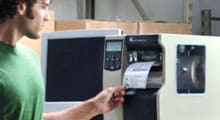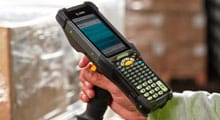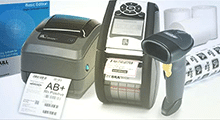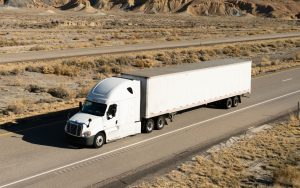From route management to streamlined administrative processes, electronic logging devices (ELDs) offer a variety of benefits in the transportation and logistics industries. Many companies, however, have been slow to adopt and make full use of these devices. This is understandable, given the sheer cost of implementing compliant devices. As such, the federal government has taken measures to encourage the safe and secure use of ELDs for a variety of commercial applications.
What is the ELD Mandate?
The ELD Federal Motor Carrier Safety Administration (FMCSA) mandate requires commercial motor vehicles to record driving hours, record service records, and comply with the Hours of Service rules (HOS). The data is collected using the logging devices which record items like on engine run-time, how many miles are driven, how long the engine has been operating, and more.

Meant to provide a safer work environment for drivers, the ELD mandate was enacted as part of the Moving Ahead for Progress in the 21st Century Act (MAP-21). Under MAP-21, the Secretary of Transportation must adopt regulations that require the use of ELDs in commercial vehicles operated by drivers who need to keep records of duty status (RODs).
The goal? To help prevent accidents involving sleep-deprived drivers. While paper logs have traditionally been used to restrict driving time, they are often inaccurate. The logging devices, however, can be depended on for more precise tracking.
While MAP-21 and the mandate were adopted in phases spanning several years, the most significant changes arrived in the United States with the final rule on December 18th, 2017 — the mandate’s official compliance date. At this point, the use of these logging devices became mandatory. Vehicles with automatic on-board recording devices (AOBRD), however, were allowed to wait nearly two years before being required to upgrade their devices to meet the ELD requirements.
More recently, Canada has adopted its own ELD rule. This went into effect on June 12th, 2021. Since the rule is now in effect in Canada and has been in the US for a few years, it’s necessary for companies to review compliance requirements, exemptions, and solutions. Doing so will provide greater confidence of compliance and could also optimize the use of logging devices.
ELD Requirements
At its most basic level, the mandate promotes the use of ELDs for all drivers who track hours of service (HOS). Under this rule, most drivers must now replace traditional paper-based logs with an electronic version.
The mandate includes a variety of other specific requirements meant to improve safety standards among commercial drivers and all those who share the road with them.
Other requirements include:
- All ELDs must now be certified and registered with the Federal Motor Carrier Safety Administration (FMCSA).
- User documentation must be present on commercial motor vehicles. This includes manuals that describe how to use the logging devices, as well as instruction sheets with malfunction reporting requirements, instructions for data transfer mechanisms, and at least eight days’ worth of blank RODS graph grids.
- Drivers cannot be harassed based on data recorded by logging devices or related fleet management systems. Those who believe they have been harassed can seek recourse by filing official complaints.
- Supporting documents are needed to verify on-duty not driving time (ODND).
The mandate also includes provisions to allow companies to use smartphones and other mobile devices. This approach is possible as long as the ELD system as a whole meets current requirements. Chief among these? The inclusion of a hardwired connection for the vehicle’s engine.
What Does Compliance Look Like?
ELD compliance can be difficult for businesses to understand, even among those that have long relied on electronic devices. In general, however, compliance means that most commercial vehicles covering a radius of over 100 miles will need to track driving time using approved devices.
In addition to location, vehicle size can play a role in the necessity. In most cases, drivers of commercial motor vehicles (CMVs) are subject to this rule. Typically, these vehicles either weigh over 10,000 pounds or maintain a gross combination weight rating of over 10,000 pounds. The CMV designation may also apply to vehicles that are meant to transport over nine paying passengers or over sixteen non-paying passengers.
How Do Businesses Know if They Meet ELD Compliance Requirements?
Since the mandate was imposed, many business leaders have been surprised to discover that their organizations are not in compliance with the rule. Often, this is the case for businesses that have long made full use of ELDs. Such compliance issues can occur if these devices do not meet the design specifications provided by the FMCSA. Compliance may also be lacking if drivers fail to carry mandated user documentation alongside the logging devices, or have not taken the proper steps towards vehicle registration.
Given the complex nature of the mandate’s design rules and other specifications, companies benefit from implementing comprehensive solutions that include compliant devices and software. Partners who understand these complicated rules can take care of specifics, thereby ensuring full compliance free from associated stress.
ELD solutions allow business leaders to focus on what they do best, rather than struggle with compliance issues or waste time trying to research or implement mandated changes.
Electronic Logging Device Mandate Exemptions
While the ELD mandate applies to most commercial vehicles that engage in interstate commerce while maintaining RODS, a variety of exceptions exist. These address unique situations in which the use of logging devices might not be practical or necessary.
Examples of drivers allowed to bypass the mandate include:
- Those who use paper RODS, so long as they are limited to eight days within a 30-day period.
- Drive-away-tow-away operations, as the vehicle being delivered serves not only as transportation, but also, the commodity in question.
- Vehicles manufactured prior to the model year 2000.
- Operations under short-haul exceptions. These enable drivers to use timecards. As such, they don’t require RODS or ELDs.
A CDL driver (Commercial Driver’s License) who limits travel to a 100-mile air radius or never drives for more than eleven hours at a time may be exempted. Parcel delivery companies and other businesses that do not require CDLs may be able to extend short-haul distances to a 150 air-mile radius.
In addition to the exceptions highlighted above, a variety of specific organizations are exempted from the mandate. Top ELD exemptions include:
- United Parcel Service
- Motion Picture Association of America
- Truck Renting and Leasing Association
Exemptions don’t always apply for all vehicles and drivers within these organizations, nor are they guaranteed to last. As such, it’s important to research both general exceptions and specific exemptions to determine eligibility.
Solutions That Can Help
Still struggling to make sense of the ins and outs of ELD compliance requirements? You’re far from alone. Thankfully, there’s no need to stress over the specifics of the mandate. With the right provider and a tailored software solution, you can maintain full compliance while also making the most of the many benefits that strategically implemented systems have to offer.
As you seek a reliable ELD solution, look to Peak Technologies. We’re proud to offer an easy-to-deploy system that will benefit your entire organization. Contact us today for more information about our mobile workforce solutions.




































